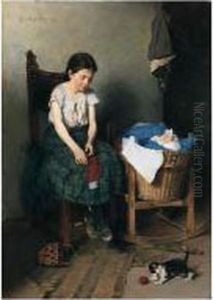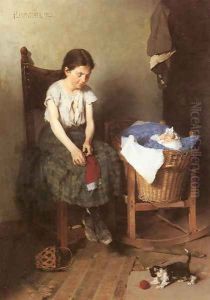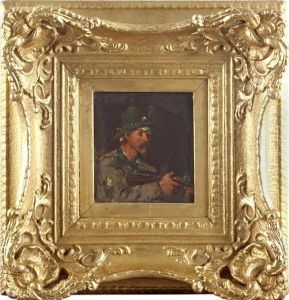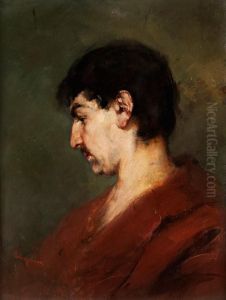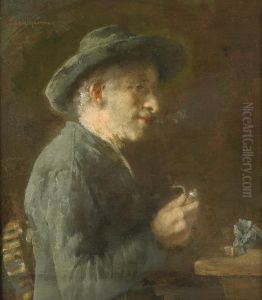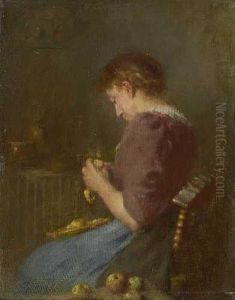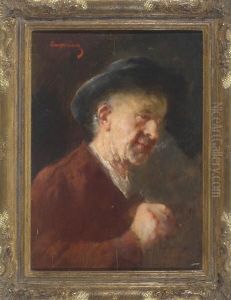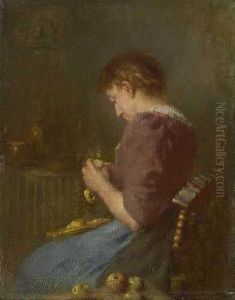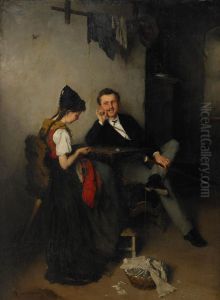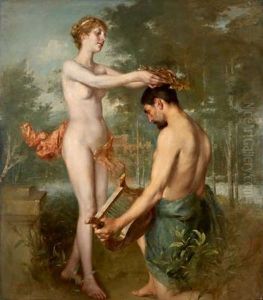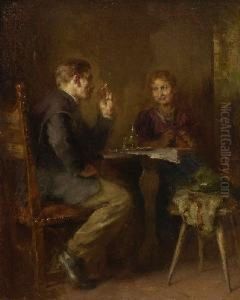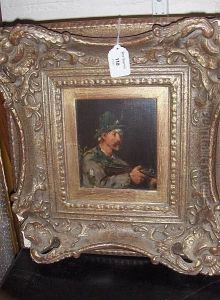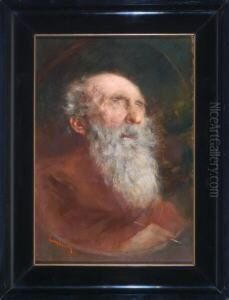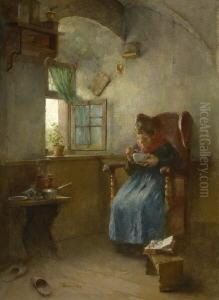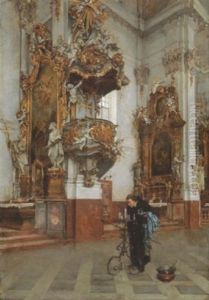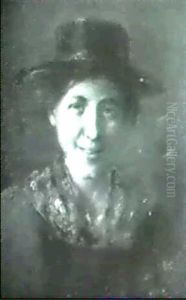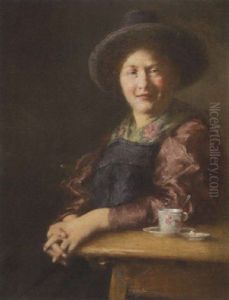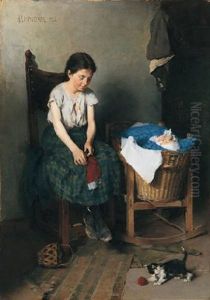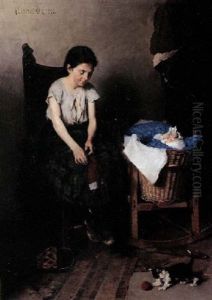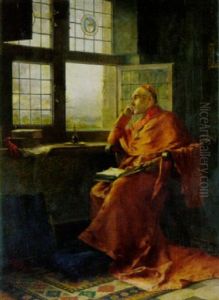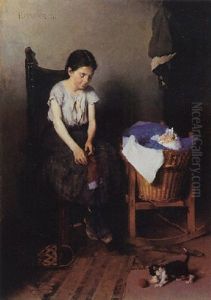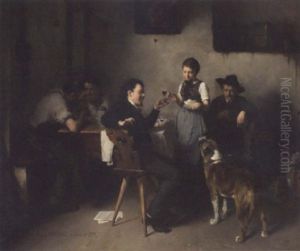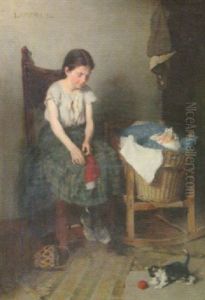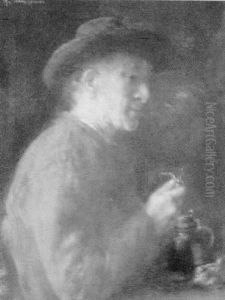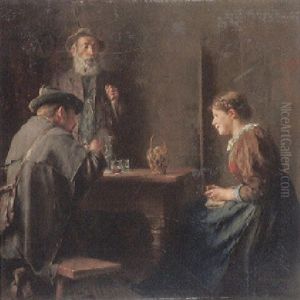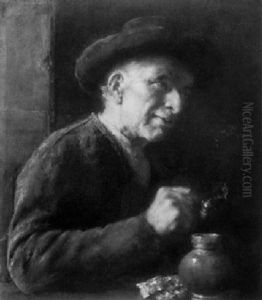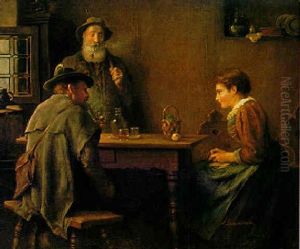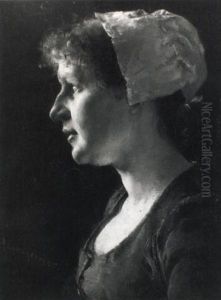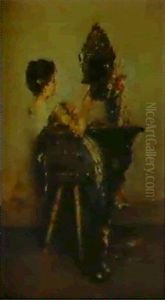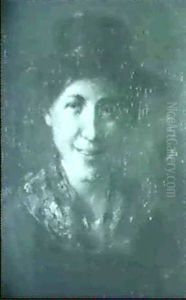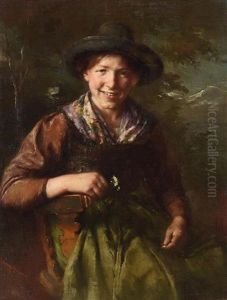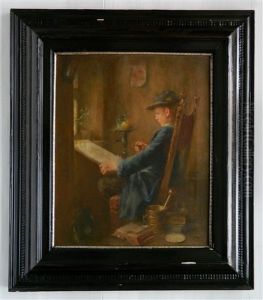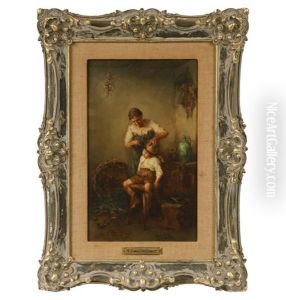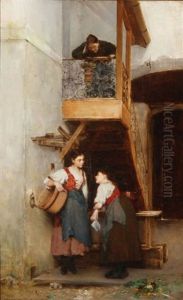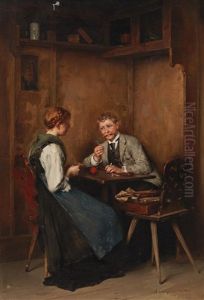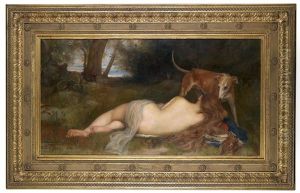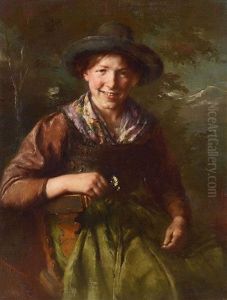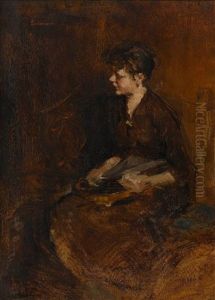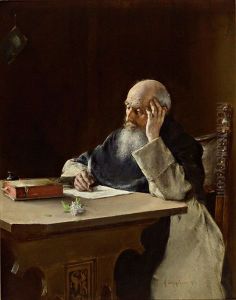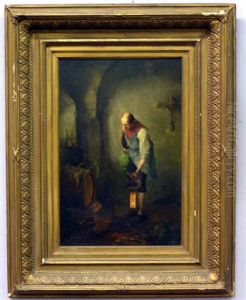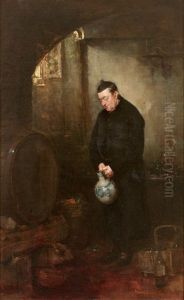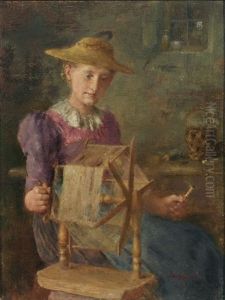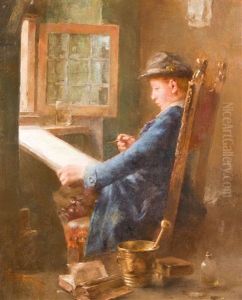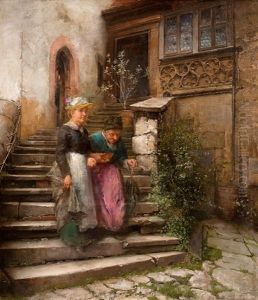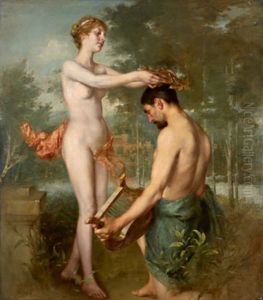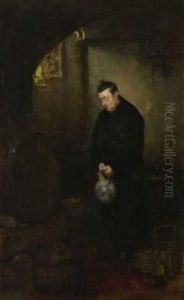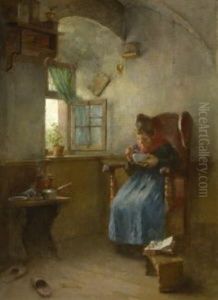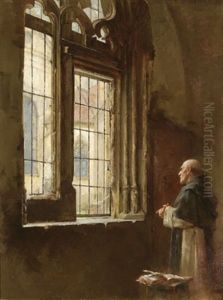Anton Laupheimer Paintings
Anton Laupheimer was a German painter known for his genre and portrait paintings. Born on October 5, 1848, in Guenzburg, Bavaria, he embarked on his artistic journey at a young age. Laupheimer received his formal art education at the Munich Academy of Fine Arts, where he studied under notable artists such as Wilhelm von Diez and Arthur von Ramberg. These influences are evident in his work, which often features meticulous detail and vibrant coloration, hallmarks of the Munich School's style during the late 19th century.
Laupheimer's oeuvre includes a variety of subjects, from religious and historical scenes to more personal and intimate portraits. His genre works, in particular, were celebrated for their narrative depth and ability to capture the essence of Bavarian life and culture. Among his notable works are 'The Letter' and 'The Chess Players', which showcase his skill in using light and shadow to create mood and atmosphere.
Throughout his career, Laupheimer remained active in the artistic community, participating in numerous exhibitions and gaining recognition not only in Germany but across Europe. His paintings were appreciated for their technical proficiency as well as their emotional depth, bridging the gap between traditional and modern sensibilities in a rapidly changing world.
Despite his success, Anton Laupheimer's work fell into relative obscurity after his death in Munich on October 28, 1927. However, in recent years, there has been a renewed interest in his contributions to German art, with exhibitions and research shedding light on his life and oeuvre. Laupheimer's paintings are now recognized for their historical value and artistic merit, offering insight into the cultural and societal dynamics of his time.
